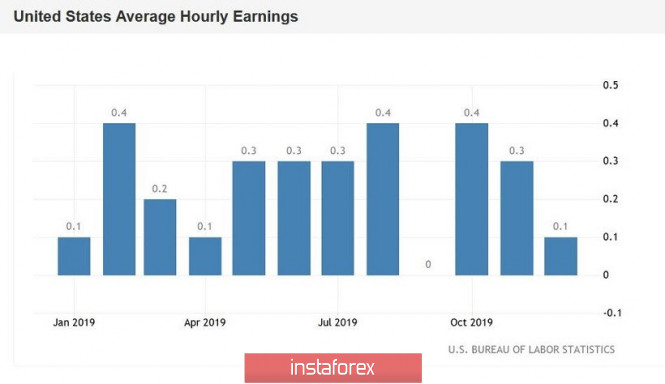US Nonfarm disappointed: almost all indicators of labor market growth in the US came out in the red zone, not reaching forecast values. Nevertheless, the dollar showed some a certain stress tolerance yesterday - although the currency weakened throughout the market, but at the same time remained almost at the same levels as before the release. The EUR/USD pair was no exception: the bulls were able to pull it into the area of the 11th figure, but the upward impulse almost completely drowned, and traders closed the trading week at 1.1118.

That is, on the one hand, it cannot be said that dollar bulls completely ignored the release - the greenback to one extent or another fell in almost all pairs. On the other hand, the reaction of traders was extremely restrained, given the published data. It is likely that yesterday's release will still return to dollar bulls later, for example, at the end of January, when the Federal Reserve's first meeting this year will be held. But today, market participants clearly do not focus on the weak dynamics of the labor market, while maintaining interest in the US currency. The published data could not fundamentally reverse the fundamental picture for the pair, although in my opinion, they are clearly not in favor of the US currency.
Almost all components came out worse than expected, reflecting a slowdown in the labor market. Only the unemployment rate remained the same, that is, at around 3.5%. This is a record of several decades - the last time the indicator stayed at this level in the distant 1969. However, this fact actually serves as little comfort for dollar bulls. The unemployment rate is not responding so quickly to the current situation - this indicator refers to lagging economic indicators. Therefore, a certain optimism among traders regarding the relatively low unemployment rate is premature, since more operational indicators indicate rather alarming trends.
All of them went below the forecast values. Instead of an increase of 165 thousand (consensus forecast), the indicator grew by 145 thousand. But the number of jobs in the manufacturing industry has completely decreased (by 12 thousand). The indicator for the second time in a short time plunges into the negative area - it fell by 49 thousand in October. It is worth recalling that the ISM production index has been consistently decreasing for the past seven months, collapsing to the level of 47.2 points (this is a 10-year low) in December. The growth in the number of people employed in the private sector of the economy also slowed down (139 thousand with a forecast of 155 thousand, the previous value was 243 thousand). In this case, the decline is insignificant, but this factor still played a role, given the dynamics of the remaining indicators.
Nonfarm's inflationary component — the level of average hourly wages — was especially disappointing. This most important indicator for the Fed was at around 0.1% on a monthly basis (the worst result since last September, when it fell to zero) and 2.9% on an annual basis (worst result since July 2018). Such dynamics are also correlated with the uncertain growth of key inflation indicators.

It is worth noting here that the labor market has long been a reliable tool for the dollar. Against the backdrop of fluctuations in other key indicators, Nonfarm has always supported dollar bulls - after the spring recession last year, the US labor market recovered and kept the mark. But the numbers published yesterday amid a consistent decline in the ISM production index may subsequently undermine the greenback position.
But yesterday, the market, in fact, ignored this fact, justifying the decline with seasonal, pre-holiday factors. In addition, White House chief economic adviser Larry Kudlow praised the December Nonfarm, stating that "employment rates still remain very strong." Comments by White House representatives on the dynamics of macroeconomic indicators tend to have little effect on the dollar's position - however, traders still focused on this nuance yesterday. In addition, participants in the foreign exchange market are now focused on waiting for the signing ceremony of the first phase of the US-China trade deal. It will be held early next week, while a newsletter on the text of the trade agreement will be released on January 15. At least Kudlow promised to make the text public by this deadline.
Thus, the market actually ignored the alarming, in my opinion, signals from the US labor market. This made it possible for dollar bulls to hold the EUR/USD pair at the bottom of the 11th figure, preventing the development of the upward impulse. Next week, the dollar may receive additional support amid optimism regarding the prospects for trade relations between the US and China. The closest target of the downward movement is located at 1.1060 - this is the upper boundary of the Kumo cloud, which coincides with the lower line of the Bollinger Bands indicator on the daily chart.
The material has been provided by InstaForex Company - www.instaforex.com